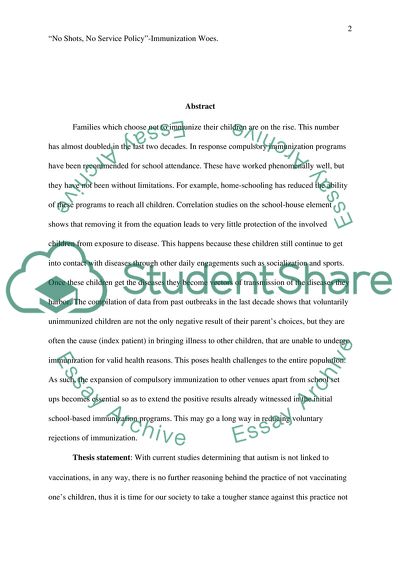Cite this document
(“Adopting a No Shot No Policy: Disproving the link between autism Research Paper”, n.d.)
Adopting a No Shot No Policy: Disproving the link between autism Research Paper. Retrieved from https://studentshare.org/health-sciences-medicine/1594312-adopting-a-no-shot-no-policy-disproving-the-link-between-autism
Adopting a No Shot No Policy: Disproving the link between autism Research Paper. Retrieved from https://studentshare.org/health-sciences-medicine/1594312-adopting-a-no-shot-no-policy-disproving-the-link-between-autism
(Adopting a No Shot No Policy: Disproving the Link Between Autism Research Paper)
Adopting a No Shot No Policy: Disproving the Link Between Autism Research Paper. https://studentshare.org/health-sciences-medicine/1594312-adopting-a-no-shot-no-policy-disproving-the-link-between-autism.
Adopting a No Shot No Policy: Disproving the Link Between Autism Research Paper. https://studentshare.org/health-sciences-medicine/1594312-adopting-a-no-shot-no-policy-disproving-the-link-between-autism.
“Adopting a No Shot No Policy: Disproving the Link Between Autism Research Paper”, n.d. https://studentshare.org/health-sciences-medicine/1594312-adopting-a-no-shot-no-policy-disproving-the-link-between-autism.


